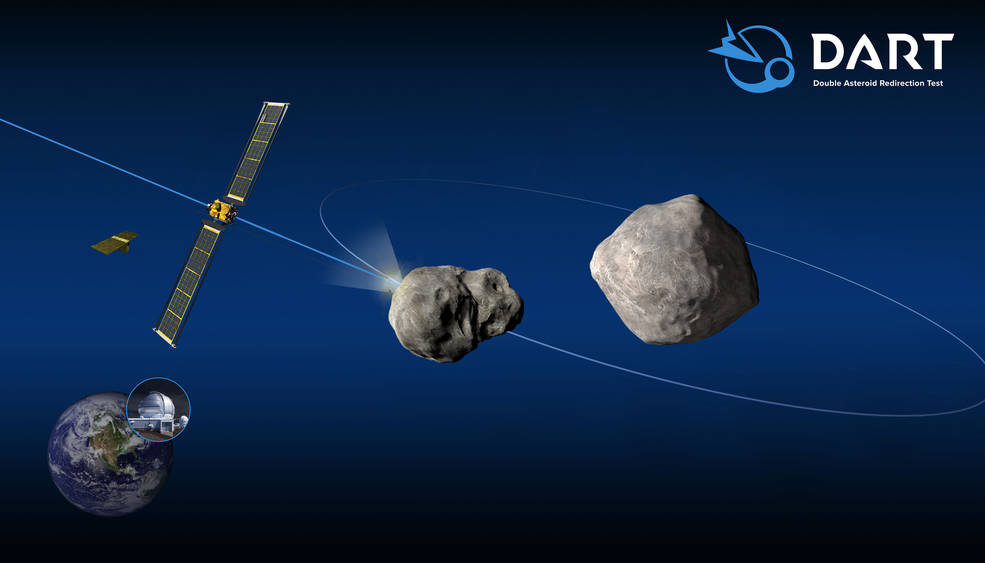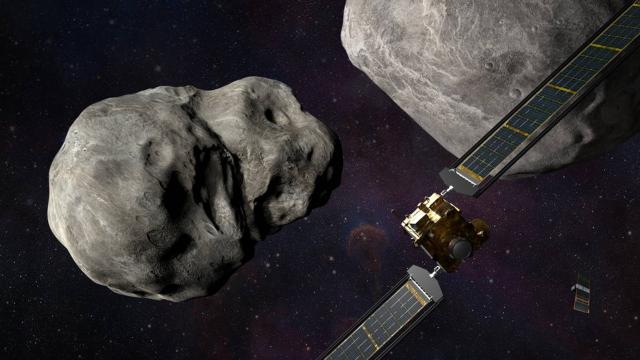There’s been plenty of apocalypse movies about asteroids hitting Earth, and while it makes for good entertainment, it’s also a real possibility. This brings up the question, what would we do if an asteroid was heading for Earth? NASA is on a mission to find out.
The space agency will soon launch its Double Asteroid Redirection Test (DART) mission which aims to see if crashing a rocket into an asteroid is a viable defence solution.
What is NASA’s DART mission?
DART is described by NASA as the first demonstration of the kinetic impactor technique, which involves “sending one or more large, high-speed spacecraft into the path of an asteroid in space to change its motion”.
The DART spacecraft is specially designed for its task and is equipped with an onboard camera named DRACO and sophisticated autonomous navigation software.
The DART demonstration will be targeting near-Earth asteroid Didymos. The asteroid is approximately 780 meters across with its secondary body, aka ‘moonlet’, spanning about 160 meters in size.
To achieve kinetic impact deflection, the DART will deliberately crash itself into the moonlet at a speed of 6.6 kms per second. NASA says this will change the speed of the moonlet in its orbit by a fraction of 1 per cent for several minutes.

It doesn’t seem like a lot but it’s intended to be enough time to observe and measure the impact using telescopes on Earth.
Essentially this is intended to be more of a reconnaissance mission than actually stopping an asteroid, but if it works it could become a viable planetary defence strategy.
When is it launching?
The DART is targeting a launch date of November 24 at approximately 4:20 pm AEDT. The mission will be aired live on NASA’s website.
The DART spacecraft will be launched aboard a SpaceX Falcon 9 rocket from Vandenberg Space Force Base in California.
While the launch is taking place next month, DART won’t actually collide with its target until 2022.
The spacecraft will separate from the launch vehicle and cruise for a number of months before it intercepts with the Didymos moonlet in late September 2022. This will occur when Didymos is within 11 million kilometres of Earth, which will allow ground-based telescopes to measure the impact.
So mark your calendars for September next year to see whether this Armageddon mission pays off.
